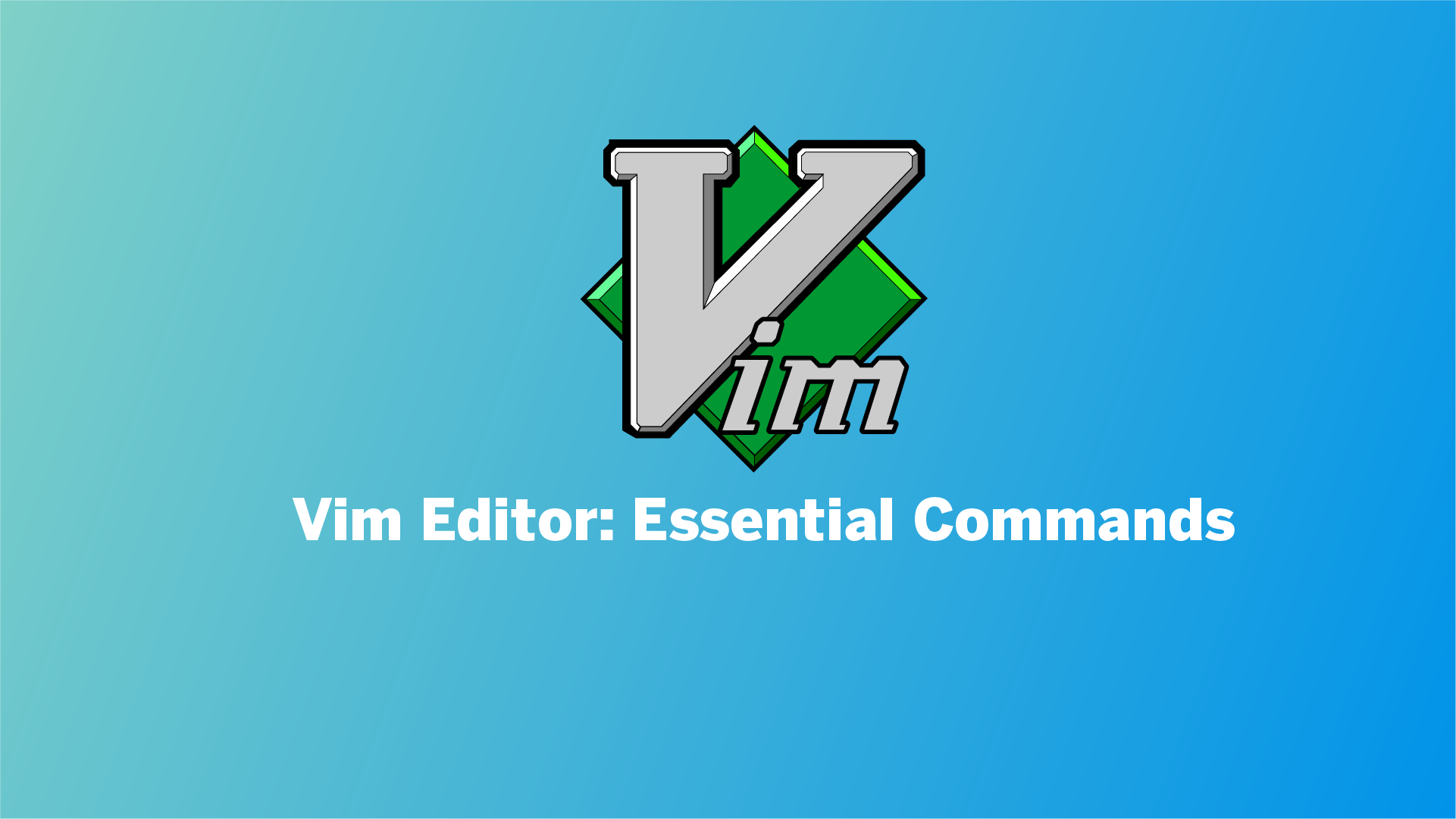Vim Editor, short for Vi Improved, is a highly configurable text editor used to create and efficiently edit text. It offers a plethora of features for customizing the Vim editor to suit your own environment. Vim editor supports different modes, each designed for specific tasks, providing basic to advanced text and code editing capabilities.
In this blog post, I will discuss the essential commands to help you get started with Vim Editor and boost your productivity. Additionally, I will provide a downloadable cheat sheet for future reference.
Table of Contents
Vim Modes and Navigation
Vim editor has three distinct modes of operation: Normal Mode, Insert Mode, and Visual Mode. Each mode has specific capabilities and workflows. Understanding the modes of Vim editor is essential before you start using it.
Normal Mode
When you first open a document with Vim editor, it opens in the default mode called Normal mode. This mode is primarily used for navigation and quick editing of any document or configuration files. Normal mode is super efficient for reading and modifying documents with Vim editor. It supports several key bindings to maximize your workflow and productivity. Here is a reference table of common navigational keybindings in Normal mode:
| Key Command | Action |
|---|---|
| h | Move the cursor left |
| j | Move the cursor down |
| k | Move the cursor up |
| l | Move the cursor right |
| gg | Go to the beginning of the file |
| G | Go to the end of the file |
| 0 | Go to the beginning of the current line |
| $ | Go to the end of the current line |
| Ctrl+f | Move forward one screen |
| Ctrl+b | Move backward one screen |
Insert Mode
Another mode is Insert mode. Press the i key to enter Insert mode. In Insert mode, you can interact with your document like a normal text and code editor. You can write and change code, use arrow keys for navigation, and backspace or delete keys for deleting characters and lines within Insert mode. Use the Esc key to exit Insert mode and return to Normal mode.

Visual Mode
Another mode in Vim editor is Visual mode. This mode allows you to select multiple blocks of text with your cursor. Press the v key to enter Visual mode. You can also navigate within Visual mode using commands similar to Normal mode. Here are the basic navigational commands in Visual mode:
| Key Command | Action |
|---|---|
| h | Move the cursor left |
| j | Move the cursor down |
| k | Move the cursor up |
| l | Move the cursor right |
| w | Select a word |
| gg | Select from the current line to the beginning of the file |
| G | Select from the current line to the end of the file |
| Ctrl+v | Enter Visual Block mode and select text in a rectangular block |
Vim Essential Commands
There are numerous commands and shortcuts you can use in Vim editor to boost your productivity. These shortcuts and keybindings allow you to quickly work with text files in the command-line environment.
Saving Files
To save your changes in Vim, use the following commands:
| Key Command | Action |
|---|---|
| :w | Write the current file to disk without quitting Vim. Saves any modifications you have made. |
| :w new_filename | Save the current file with a new name, creating a new file with the specified new_filename. |
| :wq | Write the file and quit Vim. Saves the changes and exits the editor |
| ZZ | Save and quit. If changes have been made, this command writes the file and quits Vim. If no changes have been made, it simply exits. |
Quitting Vim
To exit Vim without saving changes, you can use the following commands:
| Key Command | Action |
|---|---|
| :q | Quit Vim. Exits the editor if there are no unsaved changes. If changes have been made, Vim displays an error message and prevents you from quitting. |
| :q! | Quit Vim without saving changes. Forcefully exits Vim, discarding any modifications you made. |
Navigating within Files
Vim provides additional navigation commands to quickly move within files:
| Key Command | Action |
|---|---|
| Ctrl+u | Scroll half a screen up |
| Ctrl+d | Scroll half a screen down |
| Ctrl+e | Scroll one line up |
| Ctrl+y | Scroll one line down |
| Ctrl+o | Jump to the previous location |
| Ctrl+i | Jump to the next location |
Editing Text in Vim
Vim provides a number of editing commands to effectively edit your document and configuration.
Inserting and Appending Text
When you’re in Normal mode, you can switch to Insert mode to directly insert or append text. Here are the commands to enter Insert mode:
| Key Command | Action |
|---|---|
| i | Start inserting text at the cursor’s current position. |
| I | Start inserting text at the beginning of the current line. |
| a | Start appending text after the cursor. |
| A | Start appending text at the end of the current line. |
| o | Open a new line below the current line and enter Insert mode. |
| O | Open a new line above the current line and enter Insert mode. |
Once in Insert mode, you can freely type and edit text. To return to Normal mode, press the Esc key.
Deleting and Cutting Text
Vim provides commands to delete or cut (copy and delete) text. The deleted or cut text can be subsequently pasted elsewhere in the file. Here are the essential commands for deleting and cutting text:
| Key Command | Action |
|---|---|
| x | Delete the character under the cursor. |
| dw | Delete the current word. |
| dd | Delete the current line. |
| D | Delete from the cursor position to the end of the line. |
| yy | Copy the current line (yank). |
| p | Paste the deleted or copied text below the cursor. |
| P | Paste the deleted or copied text above the cursor. |
Copying and Pasting Text
In addition to cutting and pasting, Vim allows you to copy and paste text without deleting it. Here are the essential commands for copying and pasting:
| Key Command | Action |
|---|---|
| yy | Copy the current line. |
| yiw | Copy the current word. |
| y$ | Copy from the cursor position to the end of the line. |
| p | Paste the copied text below the cursor. |
| P | Paste the copied text above the cursor. |
Undoing and Redoing Changes
Vim provides commands to undo and redo changes made to the text. These commands help you revert or reapply modifications as needed. Here are the essential commands for undoing and redoing changes:
| Key Command | Action |
|---|---|
| u | Undo the most recent change |
| Ctrl+r | Redo the most recent change that was undone |
Indenting and Formatting Text
Vim allows you to indent and format your text to improve readability and maintain consistent
styles. Here are the essential commands for indenting and formatting text:
| Key Command | Action |
|---|---|
| >> | Indent the current line |
| << | Unindent the current line |
| = | Auto-indent the selected lines or current block of code |
| gg=G | Auto-indent the entire file |
Repeating Previous Commands
To repeat a previous command in Vim, you can use the . (dot) command. The dot command will repeat the last change or command you performed. For example:
| Key Command | Action |
|---|---|
| dd | Delete a line |
| . | Delete the next line |
| yy | Copy a line |
| . | Paste the copied line below |
The dot command is a powerful tool for repeating actions and maintaining a consistent editing flow.
Advanced Vim Command
The Vim editor not only supports basic commands but also offers a wide range of advanced functionalities. These include managing multiple files, viewing command line history, customizing split windows, and more.
Managing Multiple Files
Vim provides efficient ways to work with multiple files simultaneously. Here are some commands to help you manage multiple files:
| Key Command | Action |
|---|---|
| :e filename | Open a new file named filename in a new buffer. |
| :ls | List all the open buffers and their respective file names. |
| :b buffer_number | Switch to a specific buffer by specifying its buffer_number. |
| :bn | Go to the next buffer. |
| :bp | Go to the previous buffer. |
| :bd buffer_number | Close a specific buffer by specifying its buffer_number. |
These commands allow you to switch between files, close buffers, and efficiently work with multiple documents within Vim.
Customization and Settings
Vim’s command-line interface allows you to customize various settings and options to tailor the editor to your needs. Here are some commands for customization:
| Key Command | Action |
|---|---|
| :set number | Enable Line Number |
| :set nonumber | Disable Line Number |
| :syntax on | Enable syntax highlighting |
| :syntax off | Disable syntax highlighting |
| :colorscheme scheme_name | Set a specific color scheme for the editor |
These commands enable you to customize Vim’s behavior, appearance, and functionality according to your preferences.
Command-line History
Vim’s command-line history allows you to access and reuse previously entered commands. Here are some commands for managing the command-line history:
| Key Command | Action |
|---|---|
| :history | Display the command-line history. |
| :up or Ctrl+p | Cycle through previously entered commands. |
| :down or Ctrl+n | Cycle through the command history in reverse order. |
These commands make it convenient to access and reuse frequently used commands, saving you time and effort.
Split Windows
Vim allows you to split the editing window horizontally or vertically, enabling you to work on multiple files or different sections of the same file simultaneously. Here are the commands to split windows:
| Key Command | Action |
|---|---|
| :split | Split the window horizontally. |
| :vsplit | Split the window vertically. |
| Ctrl+w, w | Switch between windows. |
| Ctrl+w, _ | Maximize the current window vertically. |
| Ctrl+w, |
Split windows provide a powerful way to multitask and improve productivity within Vim.
Abbreviations
Abbreviations in Vim allow you to define shortcuts for longer pieces of text. They can be particularly helpful for repetitive tasks or when working with complex code snippets. Here’s how to define an abbreviation:
- :ab abbreviation replacement: Defines an abbreviation where
abbreviationis the shortcut you want to use andreplacementis the full text it will expand to.
For example, you could define an abbreviation like this:
- :ab myname John Doe: Typing myname will automatically expand to John Doe.
Conclusion
Vim is one of the most powerful command line text editor. You can enhance your coding skills in Vim using the following commands within the Vim editor. In this blog post, I’ve covered the basics to advanced Vim commands to help you get started with Vim.




